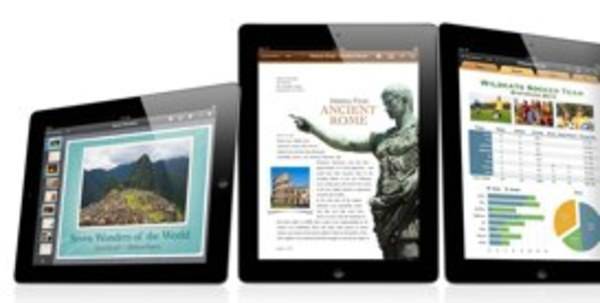Apple has always been popular in education, embraced by school teachers and tech coordinators for its ease-of-use for students, for its better selection of educational software, and for its more reliable hardware and operating system. Schools that went with Macs decades ago have stayed with Apple, even while the rest of the business world seemed to go with Microsoft in the era of the personal computer.

Apple CEO Steve Jobs declared the end of the PC era today as he unveiled the iPad 2. And he touted the educational benefits of the iPad in his presentation, highlighting in one video the impact that the device has had in particular on autistic children.
So is the iPad 2 ready for the classroom?
Drawbacks to the iPad (v1.0) as an Educational Device
Some teachers eyed the iPad with skepticism when the first generation of the device was announced last year. The iPad v1.0 had no multi-tasking. It had no camera. It had no USB port. It didn’t support Flash. There were only a limited number of educational apps and e-textbooks available. There were no educational discounts in iTunes. The iPad couldn’t print. It couldn’t be opened up, tinkered with, hacked. The iPad was part of a closed system, all under the control of one company – albeit, yes, a benevolent one in many teachers’ eyes.
Blasted by some as an expensive device for content consumption, teachers want their students to have computing devices that foster content creation. Could the iPad deliver that, they wondered.
Yes, it could. It has.

Will the iPad 2 Meet Students’ and Teachers’ Needs?
Many of the limitations that make the device ill-suited for the classroom have already been addressed – through various iOS upgrades and by the explosion of educational apps and e-books. The iPad now has multi-tasking (sort of). You can print. The App Store offers a volume purchase program.
The iPad 2, unveiled today, addresses even more of the drawbacks of the iPad as an educational device. The big one: the iPad 2 will have two cameras. The addition of GarageBand and iMovie – two very popular pieces of software in the classroom – will enable students to create multimedia projects. The cost of the new iPad isn’t any higher – that’s good news. And the addition of the HDMI cable will mean that iPad content can be connected to a HDTV (which really isn’t the projection device that most teachers have in their classrooms, but it’s a start).
With all the limitations of the device – many of which have been addressed with various iOS updates and by third-party apps over the past year – many schools piloted iPad programs and have reported on their success. Students are managing to do more than simply “consume” via the iPad. And whether the iPad is just a shiny, engaging, but expensive novelty, if nothing else, trading in a backpack full of textbooks for a 1.3 lb tablet is a win for students’ physical well-being.

The Verdict?
There are still questions – lots of questions – about iPads in the classroom. The cost (particularly in tough economic times) of any one-to-one mobile computing program – whether those tablets are Apple or Android – may be beyond many schools’ reach. There are still kinks to be worked out to make what is, really, a consumer electronic product and marketplace, function in a shared and open educational setting.
Has Apple, already the beneficiary of a lot of good will from teachers, shown today that it’s ready to take on the challenges of bringing iPads into the classroom? Teachers, students, administrators: did you see something today to make you think that, as Apple suggests, the iPad will “change the learning landscape”?

















